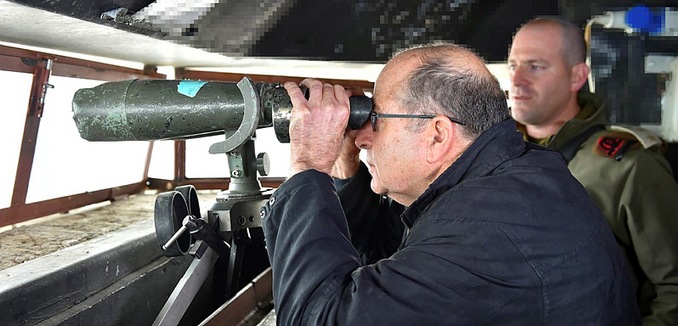Last week’s rocket attacks on the northern Galilee and Golan Heights by a Syrian cell of the Iran-backed Islamic Jihad terrorist group were likely a part of “an Iranian effort to maintain a limited front from which it can engage Israel without igniting a broader war,” and may be repeated “at least once every few months,” according to an analysis written in Ha’aretz today by military correspondent Amos Harel. The threat underscores Israel’s concern that “lifting sanctions on Iran will enable it to send billions of dollars to a long list of terrorist and guerrilla organizations.”
The Israeli-Syrian border first heated up in early 2013, after nearly four years of almost total quiet, as a side effect of the Syrian civil war. Initially, Hezbollah used it to launch small-scale attacks in response to strikes on arms convoys along the Syrian-Lebanese border and assassinations of its operatives in Lebanon for which it blamed Israel. Later, Iran (more specifically, the Quds Force of Iran’s Revolutionary Guards) activated two local networks in the Golan Heights. One was commanded by Samir Kuntar, a convicted murderer whom Israel freed in a prisoner swap, and based in the Syrian Druze village of Khader. The other was described as an elite Hezbollah force commanded by Jihad Mughniyeh. …
Kuntar’s men were hit at least three times, including once when a cell was on its way to plant bombs along the border. Mughniyeh, his top operatives and an Iranian general who served as their liaison with the Revolutionary Guards were killed in a strike near Quneitra in January.
While last week’s rocket attacks were carried out by Islamic Jihad, not Hezbollah, they were indicative of Iran’s broader interest in confronting Israel by way of Syria.
The rocket launches confirmed what Israeli intelligence already knew: Even though the Assad regime retains control, with difficulty, of only about a tenth of Syria’s border with Israel in the Golan Heights — and even that much only if, alongside the corridor linking Quneitra to Damascus, you include the Druze enclave in Khader — Iran is interested in continuing to conduct small-scale assaults on Israel from this territory. Thus the moment another such attempt occurred, Israel struck hard in response — both at the cell itself and at checkpoints manned by the Syrian army’s 90th Brigade, which controls the access road from Damascus to the border.
During a meeting with Hezbollah leader Hassan Nasrallah earlier this month, Iran’s Foreign Minister Mohammad Javad Zarif boasted that the nuclear deal presented “a historic opportunity” to confront Israel. Before the nuclear deal was completed, Ali Akbar Hashemi Rafsanjani, Iran’s former president and ally of current president Hassan Rouhani, said that Israel feared the agreement because it would strengthen Iran and that one day Israel would be “wiped off the map.”
After the January IDF strike that killed Jihad Mughniyeh and an Islamic Revolutionary Guard Corps general, Phillip Smyth wrote that Hezbollah’s increased activity in Syria reflected Iran’s plan to “encircle” Israel.
For Iran and its Hezbollah proxy, this success is a step in a process to militarily encircle the Israelis. Tehran is currently re-solidifying its relationship with Hamas in Gaza, addressing a push for a southern front against Jerusalem. If needed, the Golan’s near-anarchic conditions also provide Hezbollah with plausible deniability (in the odd case it wishes to deny it had a role in attacking the Jewish state). Geographically, the domination of the Golan potentially creates a Hezbollah-dominated zone stretching from the Mediterranean to the Jordanian border.




